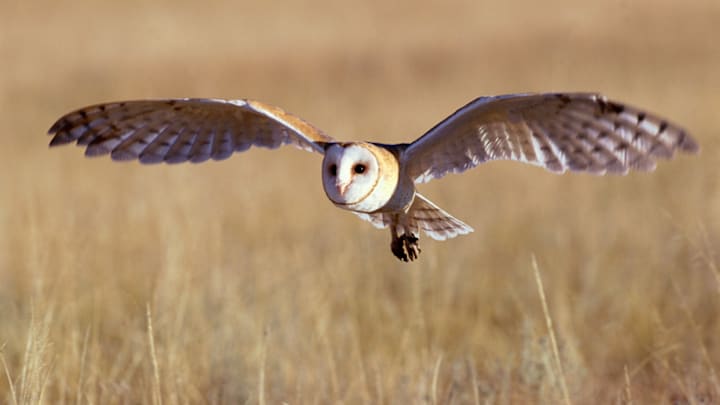Owls are masters of stealth. While hunting at night, their superior hearing and nocturnal vision allow them to locate faraway prey and their near-silent flight lets them sneak up on their dinner unannounced. Compared to the owl’s silent gliding flight, many other birds can seem downright noisy as they move through the air (we’re looking at you, doves and pigeons). But what allows owls to fly so quietly, when other birds can be heard flapping and fluttering from far away?
According to Gizmodo, a group of researchers decided to answer that question, and their experiment appears in the short BBC Earth video below. Using sensitive sound equipment, the BBC Earth team recorded the sounds of a pigeon, a peregrine falcon, and a barn owl, all in flight. Then, they filmed each bird flying over a pile of feathers to study how their wings disturbed the air—and the feathers—beneath them. They found that differences in sound came down to each bird’s proportions: The pigeon, for instance, has small wings in relation to its body, forcing it to flap desperately to stay in flight. The owl, meanwhile, supports its small body with relatively large wings, allowing it to glide further on a single wingstroke, creating less air turbulence.
“The barn owl is far more graceful,” the video explains. “Just one gentle wingbeat sees her gliding effortlessly through the air, creating little more than a whisper in the feathers below.”
It isn’t just wing proportion that allows owls to move silently. They evolved to have special feather structures that dampen sound. As Audubon magazine explains, the leading edges of owl wing feathers sport serrations that break up the air flow as the birds fly, so the usual whooshing sound that turbulence creates is quieted. The soft textures of the other owl feathers muffle the sound further until virtually all of the audible noise is absorbed.
Scientists suggest owls evolved these adaptations to facilitate hunting, either to sneak up on skittish prey, or to allow owls to listen and triangulate the prey’s location as they fly, without any distracting sound.
Learn more about the science behind the silent flight of the barn owl in the video above.
A version of this story was published in 2016; it has been updated for 2024.
